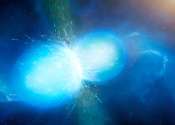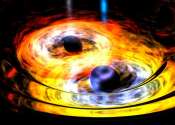The black hole always chirps twice: Scientists find clues to decipher the shape of black holes
A team of gravitational wave researchers led by the ARC Center of Excellence for Gravitational Wave Discovery (OzGrav) report that when two black holes collide and merge, the remnant black hole "chirps" not once, but multiple ...








